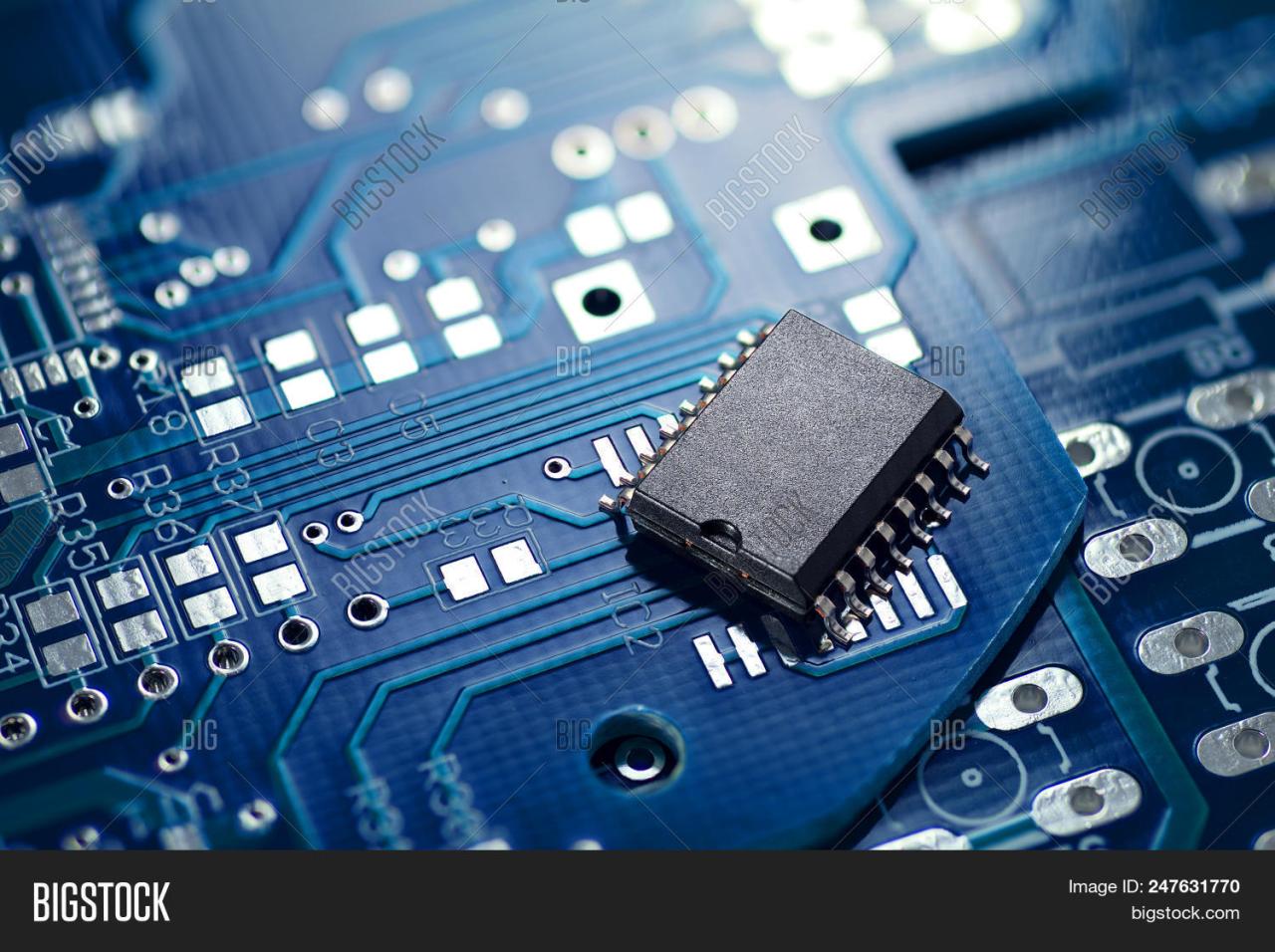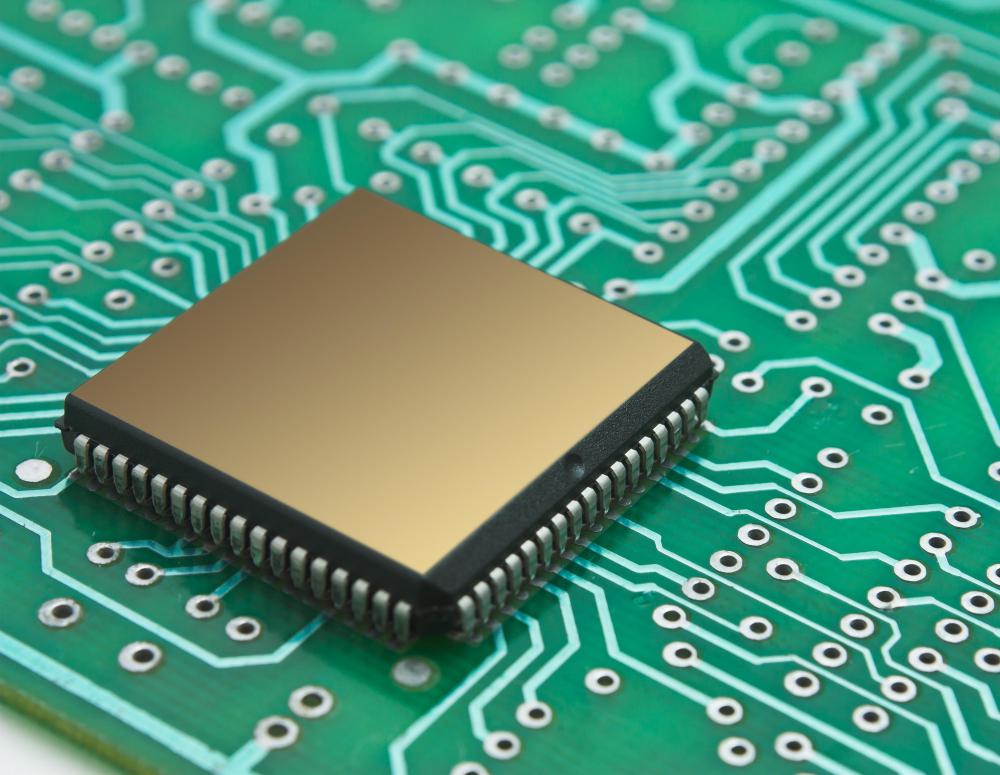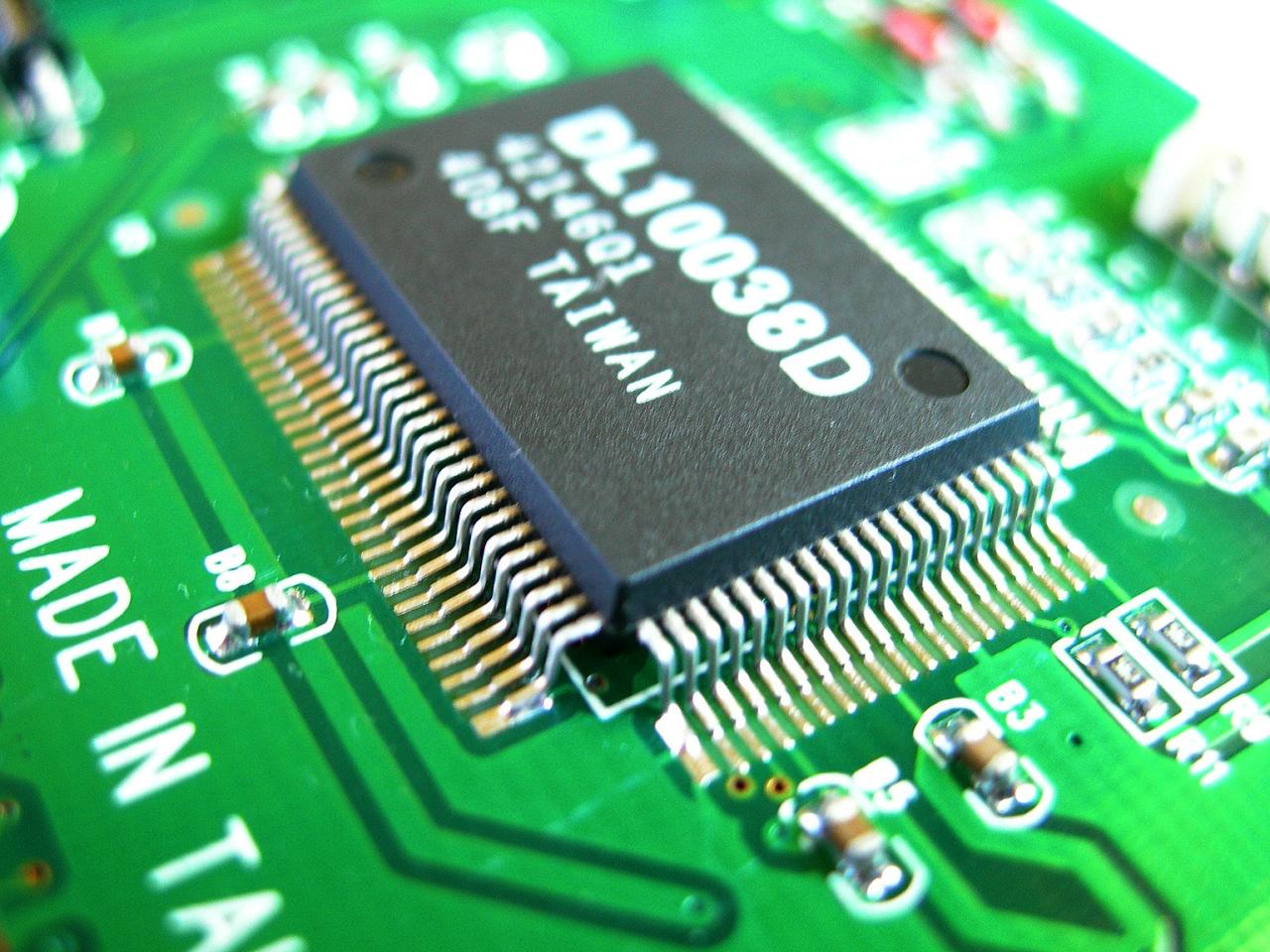Chip iPhone sets the stage for this enthralling narrative, offering readers a glimpse into a story that is rich in detail and brimming with originality from the outset. The evolution of chip technology in iPhones has been nothing short of remarkable, transforming the way we interact with our devices. From initial models to the sophisticated processors of today, each chip iteration has not only enhanced performance but also redefined user experiences, making every interaction seamless and intuitive.
As we delve into the intricacies of iPhone chips, we will explore their specifications, impact on processing power, energy efficiency, and security features that safeguard our digital lives. This deep dive will illuminate how these tiny yet powerful components drive everything from gaming performance to data protection, paving the way for future innovations in smartphone technology.
Understanding the Chip Technology in iPhones
The evolution of chip technology in iPhones has been a cornerstone of Apple’s innovation strategy, significantly influencing both the device’s performance and user experience. From the introduction of the first iPhone in 2007, which utilized the relatively simple ARM11 chip, to the latest A-series chips, this journey reflects a commitment to enhancing computational power, efficiency, and capabilities. The advancements made over the years showcase how Apple has consistently pushed the boundaries of mobile technology.
The A-series chips have undergone remarkable transformations, becoming increasingly sophisticated with each iteration. The latest chip models incorporate cutting-edge technology that not only boosts speed but also enhances efficiency and security. Key features of the latest A-series chips include an improved CPU architecture, advanced graphics capabilities, and neural processing units for artificial intelligence tasks.
Evolution of Chip Technology in iPhones
The journey of chip technology in iPhones is marked by several significant milestones, each bringing forth substantial improvements in performance and functionality. The following points highlight the evolution:
- A4 Chip (2010): Marked the arrival of Apple-designed chips, featuring a single-core architecture that laid the groundwork for future advancements.
- A5 Chip (2011): Introduced dual-core processing, enabling faster performance and improved graphical capabilities.
- A6 Chip (2012): Emphasized a 22nm manufacturing process, enhancing efficiency and performance while reducing power consumption.
- A7 Chip (2013): The first 64-bit mobile chip, which revolutionized processing speed and allowed for greater multitasking capabilities.
- A11 Bionic Chip (2017): Featured a six-core CPU, improving performance by up to 25%, along with a neural engine for advanced machine learning tasks.
- A15 Bionic Chip (2021): Enhanced graphics performance and energy efficiency, making the device more capable of handling demanding applications.
Main Features of the Latest Chip Models
The most recent A-series chips showcase an array of compelling features that significantly elevate the iPhone experience. Understanding these features sheds light on their impact on device performance:
- Performance Boost: Each new chip iteration brings improved CPU and GPU performance, resulting in faster app launching and smoother graphics rendering.
- Power Efficiency: Advanced manufacturing processes contribute to lower power consumption, extending battery life while maintaining high performance.
- Enhanced Neural Processing: The inclusion of dedicated neural engines allows for real-time machine learning applications, improving features such as photography and augmented reality.
- Security Enhancements: Integrated security features, such as Secure Enclave, provide robust data protection and secure biometric authentication.
Impact of Chip Technology on iPhone Performance and User Experience
The advancements in chip technology have a profound impact on overall iPhone performance and user satisfaction. The following points illustrate the significance of these enhancements:
- Improved Multitasking: With powerful processors, users can seamlessly switch between applications without noticeable lag.
- High-Quality Graphics: Enhanced GPUs enable richer visual experiences in gaming and multimedia, providing users with immersive content.
- Enhanced AI Capabilities: Machine learning integration allows for smarter features, such as predictive text and personalized recommendations, improving user interaction.
- Longer Battery Life: Efficient chip design ensures prolonged usage, addressing one of the common concerns among smartphone users.
Comparison of iPhone Chips Across Different Models: Chip Iphone

The evolution of iPhone chips has been pivotal in enhancing the overall performance and efficiency of Apple devices. Each new generation of iPhone chips brings advancements in processing power, graphics capabilities, and energy efficiency, catering to the ever-increasing demands of users for speed and performance in applications, especially in gaming and intensive tasks.
A detailed comparison of the specifications of iPhone chips from various models highlights these advancements and their implications for user experience. The table below summarizes the key specifications of selected iPhone chips across different models, showcasing how far Apple has come in chip technology.
| iPhone Model | Chip Name | CPU Cores | GPU Cores | Manufacturing Process (nm) | Launch Year |
|---|---|---|---|---|---|
| iPhone 6 | A8 | 2 | 4 | 20 | 2014 |
| iPhone 7 | A10 Fusion | 4 | 6 | 16 | 2016 |
| iPhone X | A11 Bionic | 6 | 3 | 10 | 2017 |
| iPhone 12 | A14 Bionic | 6 | 4 | 5 | 2020 |
| iPhone 13 | A15 Bionic | 6 | 4 | 5 | 2021 |
| iPhone 14 | A16 Bionic | 6 | 5 | 4 | 2022 |
Chip Performance Impact on Gaming and Application Processing
The performance of iPhone chips significantly influences gaming experiences and application processing speeds. With each new chip, Apple has implemented improvements in CPU performance, GPU capabilities, and neural processing units, which facilitate more complex calculations and graphics rendering.
Modern iPhone chips, especially from the A11 Bionic onward, have employed multi-core architectures that allow for enhanced multitasking capabilities and smoother performance in resource-intensive applications. This transformation is evident in gaming, where users benefit from higher frame rates and reduced latency. For instance, games that leverage high-resolution graphics and augmented reality features have become increasingly viable on recent iPhones.
Advanced gaming techniques, such as real-time ray tracing and improved AI, benefit profoundly from the capabilities of newer chips.
On the other hand, older chips, like the A8, are often found lacking in processing power for demanding applications, resulting in slower load times and less fluid interactions. Therefore, users seeking seamless performance, particularly in gaming and high-performance applications, are more inclined to upgrade to newer models.
Power Efficiency Differences Between Older and Newer Chips
The transition from older to newer iPhone chips has also brought notable improvements in power efficiency. Apple has consistently focused on optimizing power consumption in their chip designs, which is crucial for enhancing battery life—a key concern for users.
The advancement in manufacturing processes, such as moving from 20nm to 5nm technology, has allowed for more transistors to be packed into a smaller space, resulting in better performance per watt. This means that newer chips can perform tasks more efficiently while consuming less battery power, prolonging the time users can operate their devices without recharging.
For example, the A14 Bionic chip introduced in the iPhone 12 is not only faster but also more energy-efficient compared to its predecessors. This trend continues with the A16 Bionic, which has further optimized energy consumption while maintaining high performance.
The power efficiency of modern chips translates to longer battery life and reduced heat generation, enhancing user satisfaction.
In summary, advancements in chip technology not only improve processing power and gaming experiences but also contribute to better energy management, marking a significant evolution in iPhone capabilities over the years.
The Role of Chips in iPhone Security

The integration of advanced chip technology in iPhones has played a pivotal role in enhancing the security features that protect user data. As smartphones become increasingly integral to daily life, the importance of robust security measures cannot be overstated. iPhone chips, particularly the A-series and secure enclave components, are designed not just for performance but also for safeguarding sensitive information against unauthorized access.
The architecture of iPhone chips is specifically tailored to incorporate security features at the hardware level. This layered approach ensures that critical processes, such as encryption and secure data handling, take place in a dedicated environment isolated from the main operating system. Such innovations in chip design significantly enhance the overall security posture of iPhones, making them resilient against various cyber threats.
Secure Enclave Technology
Secure Enclave is a crucial feature embedded within iPhone chips that reinforces data security. This coprocessor operates independently from the main CPU, providing a secure environment for sensitive tasks. The significance of Secure Enclave technology can be highlighted through the following points:
- Data Encryption: Secure Enclave encrypts sensitive data like passwords and biometric information, ensuring that even if the device is compromised, the data remains protected.
- Biometric Security: Face ID and Touch ID operations are conducted within the Secure Enclave, preventing direct access to biometric data from the main system or applications.
- Secure Boot Process: The Secure Enclave verifies the integrity of the boot sequence, ensuring that the operating system has not been tampered with during startup.
- Protection Against Attacks: By isolating sensitive processes, Secure Enclave significantly reduces the attack surface available to potential hackers, creating a formidable barrier against intrusion.
The continuous innovation in chip technology not only enhances performance but also fortifies data protection mechanisms in iPhones. As Apple evolves its chip design, the integration of advanced security features is becoming more sophisticated, reflecting the growing need for secure mobile environments.
“With each iteration of iPhone chips, Apple prioritizes security, ensuring user data remains private and protected against evolving threats.”
Through ongoing advancements, Apple illustrates how chip technology can actively contribute to a more secure digital experience. This commitment to security is evident in the architecture of their chips and the implementation of features that prioritize user privacy and data integrity at every level.
Future Trends in iPhone Chip Development

As we look ahead to the future of iPhone chip development, the landscape appears highly promising and innovative. Apple has consistently pushed the boundaries of technology with its custom chip designs, and future models are expected to introduce even more advanced features, enhancing performance, efficiency, and security. This evolution is driven not only by consumer demand for better devices but also by the need for improved functionalities such as AI, augmented reality (AR), and machine learning capabilities.
The upcoming advancements in chip technology for future iPhone models are likely to focus on several key areas. With the increasing integration of artificial intelligence and machine learning, chips will need to support more complex computations while maintaining energy efficiency. Apple’s custom silicon, including its M-series chips used in Macs, is paving the way for similar architectures in iPhones, providing a seamless experience across devices.
Predicted Advancements in Chip Technology
Several anticipated advancements in chip technology are set to revolutionize future iPhones. The potential enhancements include:
- Increased Performance: Future chips are expected to leverage higher transistor counts, akin to the advancements seen in the A16 Bionic chip, enhancing speed and graphics performance for gaming and AR applications.
- Energy Efficiency: Improved fabrication processes, possibly moving towards 3nm technology, will allow chips to perform better while consuming less power, extending battery life.
- Enhanced AI Capabilities: Dedicated neural processing units (NPUs) will become more sophisticated, enabling real-time AI processing for tasks like photo editing and voice recognition.
- 5G and Beyond: Future iPhones will likely incorporate more integrated 5G modules, facilitating faster data speeds and better connectivity experiences.
- Security Features: Chips may incorporate advanced security protocols, possibly utilizing quantum computing elements to enhance data protection.
Designing a revolutionary chip concept for future iPhones could integrate various cutting-edge technologies. Imagine a chip that combines a multi-core architecture with advanced AI capabilities, specifically tailored for immersive augmented reality experiences. This hypothetical chip could feature a hybrid design with the following specifications:
- Multi-Core Structure: At least 8 high-performance cores to handle intensive tasks and 4 energy-efficient cores for daily operations.
- Integrated AI Module: An on-chip AI module dedicated to processing visual inputs from AR applications in real time.
- Dynamic Power Management: A system that intelligently allocates resources based on user activity, optimizing performance while minimizing energy consumption.
- Neural Engine Upgrade: A Neural Engine capable of processing trillions of operations per second, enhancing capabilities for machine learning applications.
While the future of iPhone chip development holds much promise, Apple will likely face several challenges. The following factors will be critical to address in their chip development strategy:
Challenges in Chip Development, Chip iphone
The intricacies of chip development present numerous hurdles, which Apple must navigate carefully.
- Supply Chain Constraints: Global semiconductor shortages could impact the availability of materials critical for chip production.
- Technological Complexity: As chips become more advanced, the complexity of manufacturing processes increases, necessitating significant investment in research and development.
- Competition: The rapid evolution of competitor technologies, especially from companies like Qualcomm and Samsung, will require Apple to continuously innovate to maintain market leadership.
- Regulatory Challenges: Increasing scrutiny over data privacy and security may impose additional requirements for chip design, influencing development timelines.
- Environmental Considerations: The need for sustainable production methods will necessitate a focus on reducing the ecological footprint of chip manufacturing.
Top FAQs
What is the significance of the A-series chips in iPhones?
The A-series chips are designed specifically for iPhones, offering optimized performance and efficiency tailored for Apple’s ecosystem.
How does the chip affect battery life in iPhones?
Newer chips are designed to be more power-efficient, contributing to longer battery life without sacrificing performance.
What role does the secure enclave play in iPhone security?
The secure enclave is a dedicated security component within the chip that ensures sensitive data is stored safely, making it harder for malicious attacks.
Will future iPhone chips support advanced AI capabilities?
Yes, upcoming chips are expected to feature enhanced AI processing capabilities, enabling smarter applications and features.
How do iPhone chips compare to competitors in the market?
iPhone chips often outperform competitors in benchmarks due to their integration with software and hardware, providing a more optimized user experience.
The Samsung Galaxy Note10 is a powerful smartphone that caters to professionals and creatives alike with its S Pen capabilities and stunning display. With its impressive camera features and robust performance, it stands out in the crowded smartphone market, making it an ideal choice for those seeking productivity and innovation in one device.
The Samsung Galaxy S 4 revolutionized the smartphone experience with its user-friendly interface and advanced features at the time of its launch. It introduced innovative technologies like Smart Pause and Air Gesture, making it a significant upgrade for many users. This device remains a noteworthy chapter in Samsung’s legacy of creating powerful smartphones.